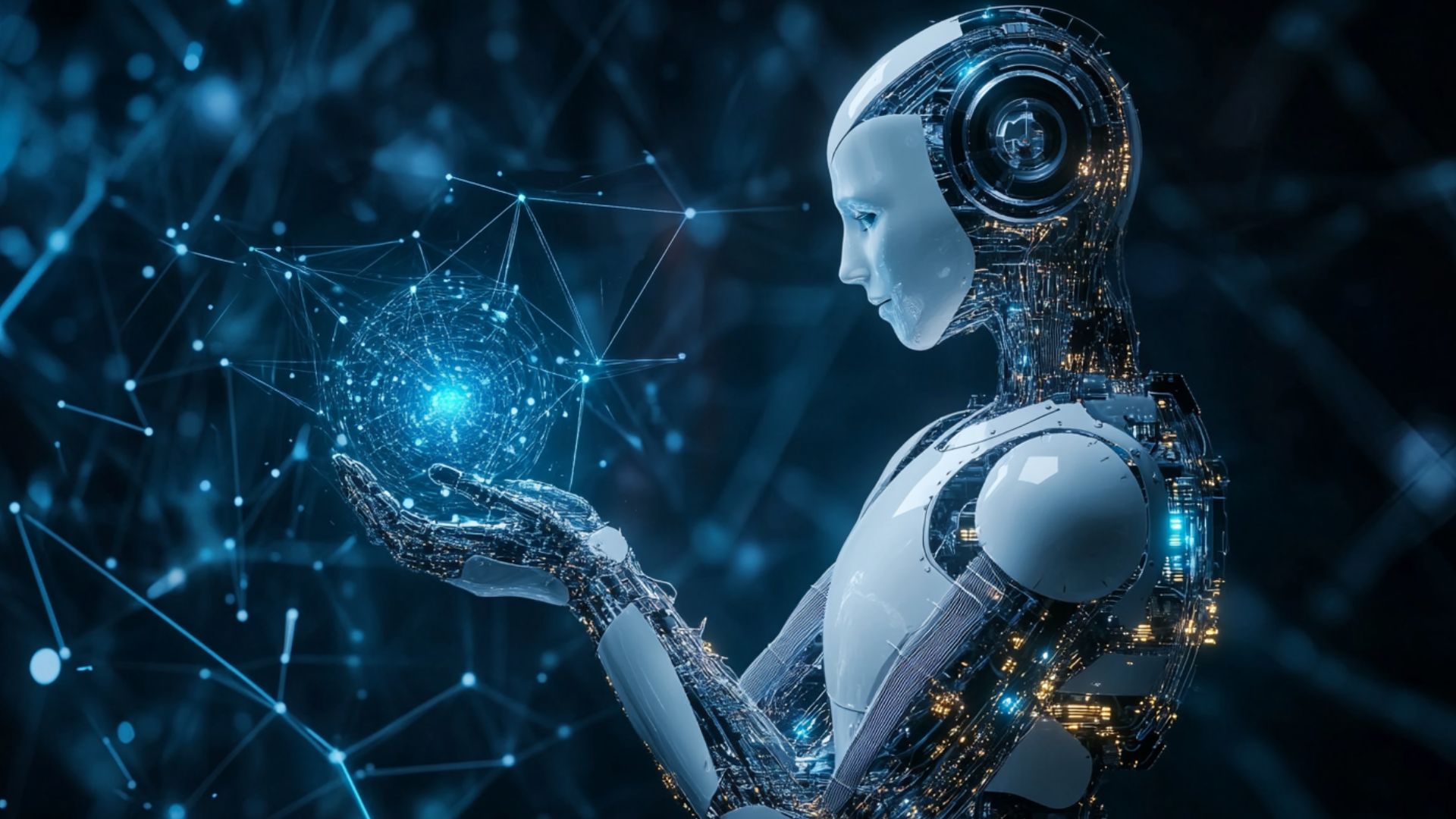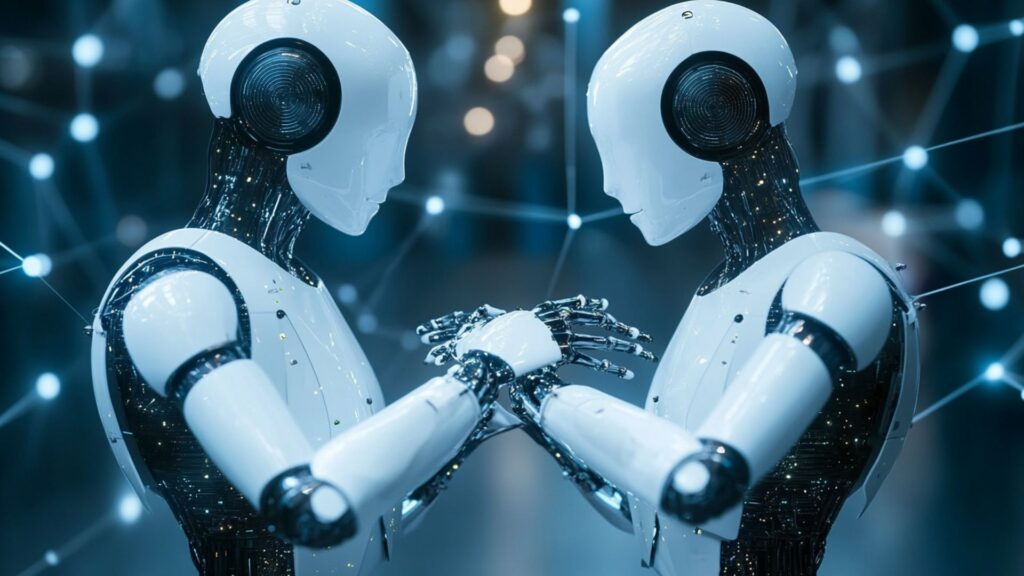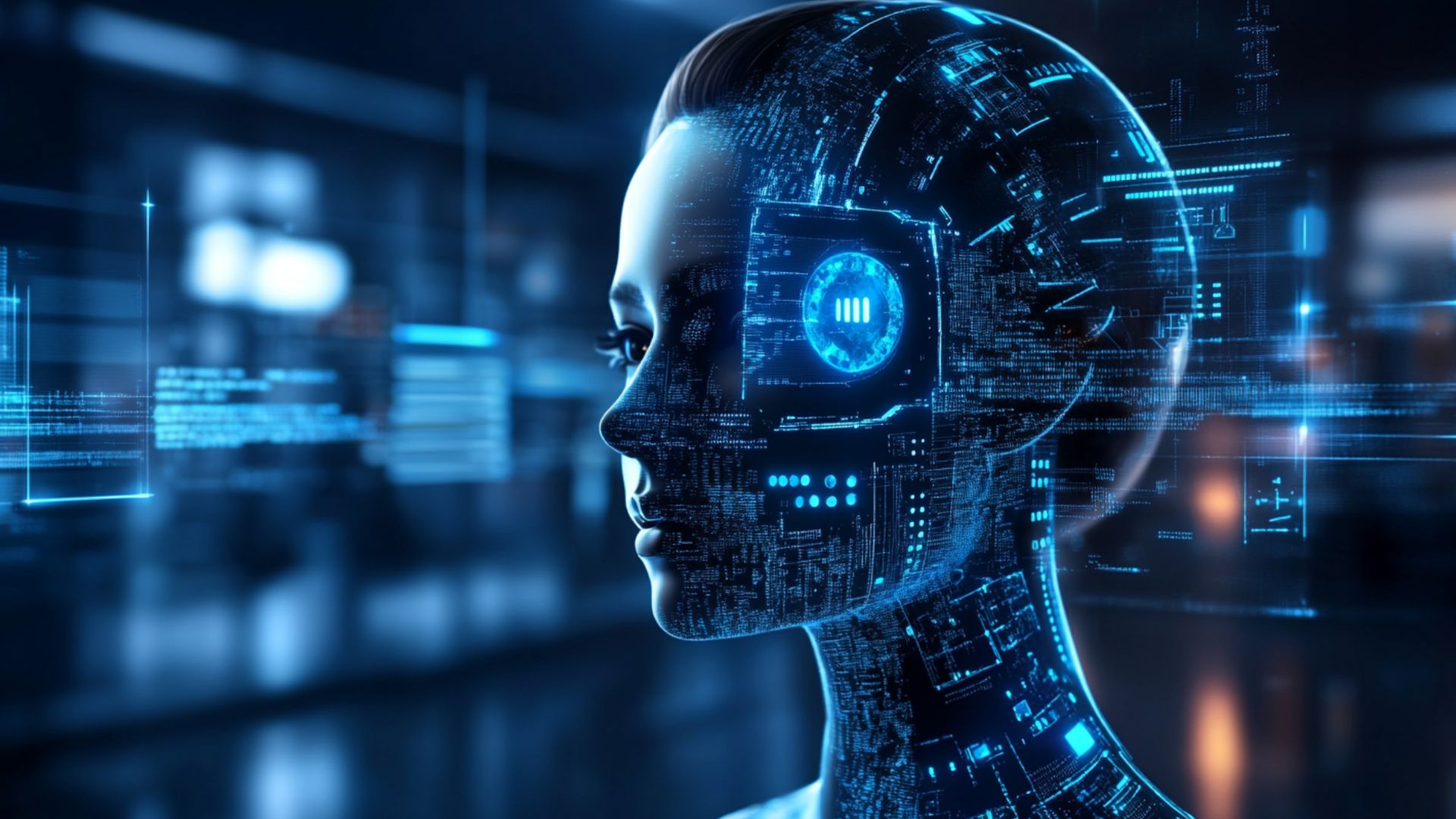What Are Multi-Agent AI Systems? Collaboration, LLMs, and the Future of Multiple AI Agents

Artificial intelligence is evolving beyond single, isolated models solving problems independently. The rise of multi-agent systems represents a new frontier. Multiple AI components, or agents, collaborate to tackle complex challenges. But what exactly are agents?
In AI, an agent is a program or system. It perceives its environment, makes decisions, and takes actions. These actions help achieve specific objectives. These agents form the backbone of multi-agent AI. This field is gaining momentum in several areas. These include large language model coordination, robotics, distributed computing, and advanced decision-making.
The growing importance of multi-agent systems stems from their unique ability. They can handle tasks too intricate for single AI models. For instance, in robotics, multiple agents can coordinate effectively. They automate warehouse operations seamlessly. In LLMs, multi-agent architectures allow models to divide tasks efficiently. One agent generates content while another verifies its accuracy. This collaborative approach is transforming artificial intelligence significantly. It enables scalable, efficient, and robust solutions.
Today, our article will explore several key aspects. We will cover the mechanics, applications, benefits, and challenges. We will also discuss the future potential of multiple AI. We will offer a comprehensive look at multi-agent frameworks. These frameworks are actively shaping the world.
Understanding Multi-Agent AI: What Are Agents and How Do They Work Together?
An AI agent is a self-contained unit. It is designed to sense its environment, reason, and act. The goal is to achieve specific objectives. Examples include a chatbot answering customer inquiries. A robot navigating a factory floor is another example. A software module solving mathematical problems also qualifies.
Single-agent systems are powerful for specific tasks. However, they struggle with complex problems. These problems require diverse skills or large-scale coordination. This is where multi-agent systems excel. They enable multiple AI agents to work together. They tackle intricate challenges effectively.
In a multi-agent system, each agent operates autonomously. Agents make decisions based on their own logic or data. However, agents also communicate to align their efforts. They work toward shared goals. This multi-agent collaboration mirrors human teamwork. Individuals with different skills contribute to common objectives.
Consider these real-world examples:
- Swarm Robotics. Small robots share data about their positions. They work together to move heavy objects. This resembles how ants work together to carry food.
- Collaborative Chatbots. One agent drafts a response. Another checks for factual accuracy. A third ensures the tone is professional.
- Self-Driving Car Networks. Vehicles exchange real-time traffic data. They optimize routes and avoid collisions. They also improve overall traffic flow.
Key characteristics of multi-agent systems include:
- Autonomy. Each agent makes independent decisions. These are based on its programming, data, or training.
- Communication. Agents share information through established protocols. These include message passing, shared databases, or learned communication methods.
- Goal Alignment. Agents work toward common objectives. This happens even if their individual tasks differ.
- Adaptability. Agents can adjust to changing environments or tasks. This enhances overall system flexibility.
This collaborative approach allows multi-agent AI to tackle complex problems. These problems require diverse expertise, distributed effort, or real-time coordination. This makes it ideal for complex, real-world applications.
Types of Multi-Agent Systems and Their Core Architectures
Multi-agent AI systems come in various forms. Each has distinct architectures tailored to specific tasks. They are also designed for different environments. Here are the primary types:
- Centralized Systems. A single controller oversees all agents. It acts like a conductor leading an orchestra. This structure is ideal for tasks requiring tight coordination. Examples include managing delivery drone fleets. Coordinating AI assistants in call centers is another example. However, centralized systems are vulnerable. Controller failure can break down the entire system.
- Decentralized Systems. Agents operate independently but follow shared rules. This is similar to flocks of birds navigating without leaders. This is common in swarm intelligence. Agents make local decisions that contribute to global goals. For example, drones mapping areas collaboratively.
- Distributed Systems. Agents are spread across different locations. They communicate as needed. This is seen in cloud-based AI systems. Global logistics networks also use this approach. Smart grid systems employ this method too. Agents handle tasks like routing packages. They also balance energy loads across regions.
An emerging approach is recombinant multi-agent models. These dynamically combine agent capabilities. They form flexible, adaptable teams. For example, in software development projects, roles are divided clearly. One agent might focus on planning project timelines. Another writes code. A third tests it. A fourth optimizes performance.
Hybrid models blend centralized and decentralized elements. They offer balanced control and flexibility. In multi-agent LLM environments, agents often specialize in specific roles. These include text generation, fact-checking, or task orchestration. They adapt their architecture to tasks. This works whether planning complex projects or executing real-time actions. It also works for analyzing large datasets.
Multi-Agent AI vs. Multiple AI Models: What's the Difference?
It's easy to confuse multi-agent AI with running multiple AI models. However, the two concepts are distinct. Multiple AI models might operate independently. Each solves its own problem without interaction. For example, one AI could translate text. It translates from English to Spanish. Meanwhile, another generates images from text prompts. There is no connection between them.
In contrast, multi-agent systems are defined by interdependence and collaboration. Agents share goals and communicate to achieve them. They often use protocols like message passing or shared memory. Imagine a team of AIs building a research report:
- One agent gathers data from reliable sources
- Another summarizes findings into concise points
- A third formats the report for presentation
- A fourth verifies citation accuracy
This coordination makes multiple AI systems more powerful. They exceed the sum of their parts. It distinguishes them from standalone multiple AI models. Understanding this difference is crucial. It helps appreciate the potential of collaborative AI frameworks.
What's an Agent in AI? Definitions Across Contexts
What's an Agent in AI? The term "agent" varies across AI disciplines. This reflects the diversity of applications. Here's how it's defined in key contexts:
- Symbolic AI. Agents follow predefined rules to solve problems. A classic example is chess-playing programs. They evaluate moves based on rule sets. They prioritize king safety or capturing opponent pieces.
- Reinforcement Learning. Agents learn through trial and error. They maximize rewards in environments. For instance, game-playing AI like AlphaGo learns strategies. It plays millions of games. It adjusts actions based on wins or losses.
- LLM-Based Applications. Agents are language models or tools. They process text and answer questions. They perform tasks like coding, summarizing, or fact-checking. For example, chatbots act as agents. They generate responses based on user input.
- Robotics and Control Systems. Agents are physical or virtual entities. They interact with environments. Examples include robotic arms assembling parts. Virtual agents managing network traffic also qualify.
In all cases, an agent's core role is clear. It perceives its environment and reasons about it. It acts to achieve goals. This includes processing sensor data, text input, or game states. This versatility makes agents the foundation of multi-agent systems. It enables them to adapt to diverse applications.
Multi-Agent Collaboration in Language Models (LLMs)

Multi-agent LLM systems are transforming how we use large language models. Rather than relying on single models, these systems employ multiple agents. Each has specialized roles to tackle complex problems. This is particularly effective for challenging tasks. These require multi-step reasoning, delegation, or iterative refinement.
For example:
- AutoGPT Teams. Multiple agents break down projects into tasks. One might research topics. Another draft content. A third edit for clarity. A fourth optimizes for SEO.
- ChatGPT with Tool Use. Agents integrate with external tools. These include web browsers, calculators, or code editors. This enhances their capabilities. One agent might fetch real-time data. Another processes it.
- Debate-Style Interactions. Agents critique each other's outputs. This improves accuracy and quality. In research tasks, one agent proposes answers. Another challenges logic. A third synthesizes refined responses.
Multi-agent collaboration systems harness LLM power effectively. They work together to enhance versatility and efficiency. They also improve workflow capabilities. These systems enable division of labor. This mirrors human teamwork. It allows for more robust and scalable solutions. This results in systems that handle intricate, multi-faceted tasks. They work more effectively than single LLMs. It paves the way for advanced AI applications. These offer greater precision and efficiency.
Focus on Multi-Agent Toolchains and Prompt Orchestration
In multi-agent LLM setups, agents often specialize. They form toolchains that streamline complex processes. Consider a research pipeline:
- Search Agent. Scours the web or databases for relevant information. Then it filters out unreliable sources.
- Summarization Agent. Condenses findings into concise, actionable points.
- Verification Agent. Cross-checks facts against trusted sources. This ensures accuracy.
- Formatting Agent. Structures output into polished reports or presentations.
An orchestrator manages this pipeline effectively. It assigns tasks and combines outputs. This process is known as prompt orchestration. It uses carefully designed prompts. These guide each agent's role. For example:
- A planning agent might outline project steps. It defines milestones and deadlines.
- Execution agents carry out specific tasks. These include writing code or drafting emails.
- A review agent evaluates output. It checks for quality and coherence.
This division of labor makes complex workflows faster. It makes them more accurate and easier to manage. It unlocks the full potential of multi-agent LLM systems.
Message Passing and Communication Between Agents
For multi-agent systems to function, agents must communicate effectively. Common methods include:
- Message Passing. Agents send data or instructions to each other. This works like emails between team members. One agent might send datasets to another for analysis.
- Shared Memory. Agents access common databases or memory spaces. They share information this way. This ensures consistency across systems.
- Learned Communication. In advanced systems, agents develop their own "language." This happens through training. This is particularly true in games or simulations. They optimize communication for efficiency.
Real-world examples of multiple AI include:
- Video Games. AI characters coordinate strategies effectively. Examples include enemies planning coordinated attacks. Allies sharing resources also qualify.
- Simulations. Agents model complex systems. They share real-time data. Examples include traffic flow, supply chains, or financial markets.
- Enterprise Systems. Agents in customer service platforms might share data. They respond to inquiries this way. One handles text analysis. Another manages scheduling.
These communication methods ensure multi-agent collaboration is seamless. They enable systems to operate efficiently. This works in dynamic environments.
Benefits and Challenges of Multi-Agent AI Systems

Multi-agent AI systems offer significant advantages. However, they also face notable challenges. Let's explore both in detail.
Benefits:
- Scalability. Adding more agents allows systems to handle larger tasks. They can manage more complex tasks too. Examples include managing city traffic systems. Coordinating global supply chains also qualifies.
- Specialization. Each agent focuses on specific roles. These include data collection or analysis. This improves efficiency and accuracy.
- Robustness. If one agent fails, others can often compensate. This ensures systems remain operational. In drone swarms, if one drone malfunctions, others adjust. They complete tasks successfully.
- Flexibility. Agents can adapt to new tasks or environments. This makes systems versatile. Applications include disaster response or dynamic market analysis.
- Enhanced Problem-Solving. Collaboration allows agents to combine diverse perspectives. This leads to more creative and effective solutions.
Challenges:
- Coordination Complexity. Ensuring agents work together without conflicts requires sophisticated protocols. It also needs real-time monitoring.
- Computational Cost. Running multiple agents demands significant processing power. This increases energy consumption and infrastructure costs.
- Goal Misalignment. Agents might prioritize individual tasks over group objectives. This leads to inefficiencies or conflicts. One agent might optimize for speed. Another prioritizes accuracy. This causes friction.
- Ethical Concerns. Collaborative AIs could make decisions with unintended consequences. Examples include autonomous weapons or biased decision-making systems. Privacy violations also qualify.
- Scalability Limits. While scalable, very large systems can become unwieldy. They require advanced management to prevent bottlenecks.
Addressing these challenges is critical. This unlocks the full potential of multi-agent AI systems. It ensures their safe, effective deployment.
The Future of Multi-Agent AI: From Simulation to Real-World Applications
The future of multi-agent AI is brimming with possibilities. As these systems mature, they're moving from research labs. They're also moving from simulations to real-world applications. These could transform industries and society. Here are exciting areas to watch:
- Autonomous Economic Agents. AIs could act as digital employees. They can negotiate contracts and manage supply chains. They can also trade in financial markets. One agent might analyze market trends. Another executes trades. A third monitors regulatory compliance.
- Collaborative Robotics. Robots in factories, hospitals, or homes could work in teams. They share tasks like humans. In hospitals, one robot might deliver supplies. Another assists in surgery. A third monitors patient data.
- Dynamic Enterprise Solutions. Companies could use multi-agent AI systems effectively. They work for customer service, project management, or data analysis. Imagine systems where one agent handles incoming emails. Another schedules meetings. A third analyzes customer feedback. A fourth generates reports.
- AI Governance Models. Agents could monitor each other. They ensure ethical AI use. This creates self-regulating systems. These prevent misuse, bias, or errors. One agent might audit decisions for fairness. Another ensures regulatory compliance.
- Smart Infrastructure. Multi-agent systems could manage smart cities. They coordinate traffic, energy, and public services. Agents could optimize traffic lights. They can balance power grids. They can also predict maintenance needs.
In business, multi-agent systems could power advanced applications. These include quality answering services or email answering services. For example:
- Email Answering Service. One agent drafts professional responses. Another ensures tone aligns with brand guidelines. A third verifies factual accuracy. A fourth schedules follow-ups.
- Customer Support. Agents could handle inquiries across channels. These include email, chat, and phone. One analyzes sentiment. Another retrieves account data. A third escalates complex issues to human agents.
Looking ahead, recombinant multi-agent systems will likely become more prevalent. These systems dynamically combine agent capabilities. They tackle new challenges. This works like assembling teams for specific projects. In disaster response, one agent might analyze satellite imagery. Another coordinates rescue teams. A third predicts aftershock risks.
From smarter cities to advanced medical systems, multi-agent AI could drive innovation. This works across sectors. However, realizing this potential requires addressing key challenges. Ethical concerns must be prioritized. This includes ensuring unbiased decision-making. It also includes preventing misuse in sensitive applications. Coordination complexity and computational costs also need solutions. These come through more efficient algorithms or hardware advancements.
By overcoming these hurdles, multi-agent AI can deliver transformative benefits. These benefit society as a whole. In conclusion, multi-agent AI represents a paradigm shift in artificial intelligence. By harnessing the power of AI agents working together, these systems solve problems. These were once out of reach. They range from automating complex workflows to enabling smarter technologies. They create more responsive technologies too.
Whether through multi-agent LLM architectures, collaborative robotics, or dynamic enterprise solutions, the future looks bright. The future of multi-agent AI is about teamwork, innovation, and real-world impact. As we refine these systems, they promise to reshape interactions. They change how we interact with technology. They can change how we solve global challenges. They help build a more connected, intelligent world.
FAQ
Multi agent AI is an approach where several autonomous agents work together inside one system. In multi agent systems, each agent senses the environment, makes decisions, and acts toward shared goals, enabling complex problem-solving that a single model often cannot handle.
When people ask “what are agents?” or “what’s an agent?”, they usually mean a self-contained AI component that can perceive, reason, and act. In multi agent AI, multiple agents coordinate, communicate, and specialize in different tasks such as planning, research, coding, or verification.
Running multiple AI models separately is not the same as a multi agent system. In multi-agent AI, agents interact, share information, and align on common objectives. With simple AI multiple models, each works in isolation without structured coordination or shared goals.
A multi agent LLM setup uses several LLM-based agents with different roles, such as one for research, one for drafting, one for fact-checking, and one for editing. This kind of multi-agent collaboration creates toolchains where agents pass results to each other to solve complex, multi-step tasks more reliably.
The main benefits of multi agent AI are scalability, specialization, fault tolerance, and richer problem-solving through collaborative reasoning. Challenges include coordination complexity, higher compute cost, potential conflicts between agents, and the need for careful design of communication in recombinant AI multi agent architectures.


